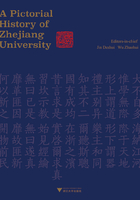
Chapter I A New Academy for Sound Scholarship (1897-1928)

Rising modern new-style higher education in China was a product of the times as it was an inevitable choice of the Chinese people after failures in various attempts.
China's fiasco in the First Sino-Japanese War in 1894-1895 caused a huge war indemnity as well as the ceding of sovereignty, shocking the whole nation. Therefore, a modern educational reform came into being across China aimed at fighting against invasion, self-strengthening, establishing schools and cultivating people.
The emergence of modern higher education in China was a product of the times, and an inevitable choice of Chinese people after failures in various attempts of national rejuvenation. The fiasco in the First Sino-Japanese War in 1894-1895 caused a huge war indemnity as well as the ceding of sovereignty, shocking the whole nation. Therefore, a modern educational reform came into being across China aimed at fighting against invasion, self-strengthening, establishing schools and cultivating people.
In 1897, with the joint efforts of Liao Shoufeng, Grand Coordinator of Zhejiang, and Lin Qi, Prefect of Hangzhou, the establishment of a modern school was approved by the Qing Imperial Court. Then, Qiushi Academy, the predecessor of Zhejiang University, was founded. On May 21, 1897, Qiushi Academy started schooling with the first class of 30 students in Puci Temple, located at Puchang Alley (now Daxue Road), with Lin Qi as director general (equivalent to the president of the Academy)
The founding of Qiushi Academy ushered in exploring the strategy of saving the nation with education and invigorating the country with human resource development, which is the source of the cultural heritage of Zhejiang University. At the beginning, Qiushi Academy was already in the prototype of a modern school with its mission, curricula, teaching system and faculty resources divergent from old-fashioned schools; thus it was one of the earliest modern higher academies operated by the Chinese after Peiyang Western Studies School and Nanyang Public School.
Qiushi Academy emphasized “Western learning”. The curricula were divided into compulsory courses, including Chinese, English, mathematics, history, geography, nature (physics), chemistry, etc., and gymnastics (sports) later, and elective courses, including Japanese, history and geography of foreign countries and music. American and Japanese professors and lecturers were employed. The examination system featured “examining Western studies at the start of every lunar month, examining Chinese studies at the mid-month”, that is, the students had mathematics, physics, and chemistry examinations at the start of the month, and economics, history and political writing examinations at the middle of the month. Examining Western studies rather than the stereotyped eight-legged essay, the Academy abandoned the corrupt customs of Imperial Education.
Qiushi Academy was the earliest Chinese school sending brilliant students to Japan for further studies. In August 1898, after the implementation of Hundred Days' Reform, the Qing court issued the decree of urging provinces to send students to study in Japan. In September, Qiushi Academy, as “the initiator of sending students to Japan”, selected four students to study in Japan including He Yushi. By 1903, the Chinese students studying in Japan from Zhejiang Province had reached 154, ranking second in China.
With the changes of political situations in China and the adaptation of the New Policies in the late Qing Dynasty, the Academy had its name changed several times: renamed Zhejiang Qiushi Grand Academy in 1901, Zhejiang Grand Academy in 1902, Zhejiang Advanced Academy in 1904, and Zhejiang Advanced College in 1912. In 1914, because of the reform of the school system, Zhejiang Advanced College was once suspended. In the beginning of the 20thcentury, the establishment of Zhejiang Public Industrial Junior College and Zhejiang Public Agricultural Junior College marked the start of Zhejiang advanced industrial and agricultural education.
In 1927, the newly founded Nanjing National Government decided to implement “Regional
University System”, establishing one university in each administrative region and naming them uniformly as “Sun Yat-sen University”, managing all academic and educational affairs of each region. The university planned in Hangzhou was the National Third Sun Yat-sen University. On July 15, 1927, on the historic site of the Academy, integrating Zhejiang Public Industrial Junior College and Zhejiang Public Agricultural Junior College, the Third Sun Yat-sen University was established, with College of Engineering and College of Agriculture as well as College of Liberal Arts and Sciences under construction. On August 7, it was named National Third Sun Yat-sen University.
The founding of Qiushi Academy and its evolution not only took the lead of introducing modern education to Zhejiang, but also set a milestone in the history of China's higher education.
List of Presidents of Zhejiang University
